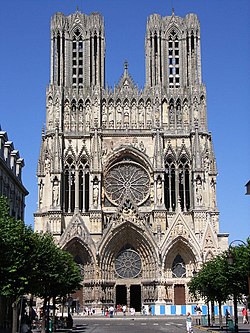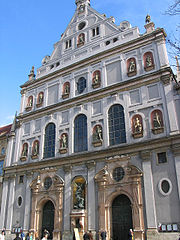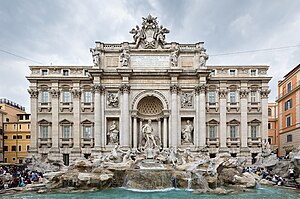Combining features of contemporary Western Roman and Byzantine buildings, Romanesque architecture is known by its massive quality, its thick walls, round arches, sturdy piers, groin vaults, large towers and decorative arcading. Each building has clearly defined forms and they are frequently of very regular, symmetrical plan so that the overall appearance is one of simplicity when compared with the Gothic buildings that were to follow. The style can be identified right across Europe, despite regional characteristics and different materials.
Gothic Architecture is a style of architecture which flourished during the high and late medieval period. It evolved from Romanesque architecture and was succeeded by Renaissance architecture.
Originating in 12th-century France and lasting into the 16th century, Gothic architecture was known during the period as "the French Style" (Opus Francigenum), with the term Gothic first appearing during the latter part of the Renaissance as a stylistic insult. Its characteristic features include the pointed arch, the ribbed vault and the flying buttress.
Gothic architecture is most familiar as the architecture of many of the great cathedrals, abbeys and parishchurches of Europe. It is also the architecture of many castles, palaces, town halls, guild halls, universities, and to a less prominent extent, private dwellings.


Renaissance architecture is the architecture of the period between the early 15th and early 17th centuries in different regions of Europe, in which there was a conscious revival and development of certain elements of ancient Greek and Roman thought and material culture.
The Renaissance style places emphasis on symmetry, proportion, geometry and the regularity of parts as they are demonstrated in the architecture of classical antiquity and in particular ancient Roman architecture, of which many examples remained. Orderly arrangements of columns, pilasters and lintels, as well as the use of semicircular arches, hemispherical domes, niches and aedicules replaced the more complex proportional systems and irregular profiles of medieval buildings.
Developed first in Florence, with Filippo Brunelleschi as one of its innovators, the Renaissance style quickly spread to other Italian cities and then to France, Germany, England, Russia and elsewhere.

Baroque architecture, starting in the early 17th century in Italy, took the humanist Roman vocabulary of Renaissance architecture and used it in a new rhetorical, theatrical, sculptural fashion, expressing the triumph of absolutist church and state. New architectural concerns for color, light and shade, sculptural values and intensity characterize the Baroque. But whereas the Renaissance drew on the wealth and power of the Italian courts, and was a blend of secular and religious forces, the Baroque was, initially at least, directly linked to the Counter-Reformation, a movement within the Catholic Church to reform itself in response to the Protestant Reformation. The Council of Trent (1545–1563) is usually given as the beginning of the Counter-Reformation.
The Baroque played into the demand for an architecture that was on the one hand more accessible to the emotions and, on the other hand, a visible statement of the wealth and power of the Church. The new style manifested itself in particular in the context of new religious orders, like the Theatines and the Jesuits, which aimed to improve popular piety. By the middle of the 17th century, the Baroque style had found its secular expression in the form of grand palaces, first in France—as in the Château de Maisons (1642) near Paris by François Mansart—and then throughout Europe.
St. Paul's Cathedral, London
Fountain of Trevi






No comments:
Post a Comment